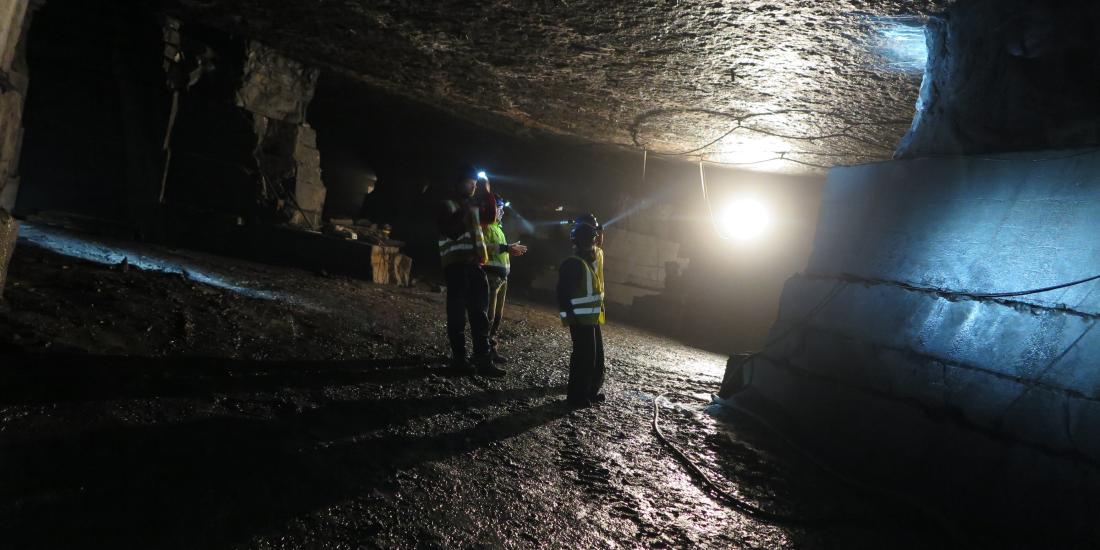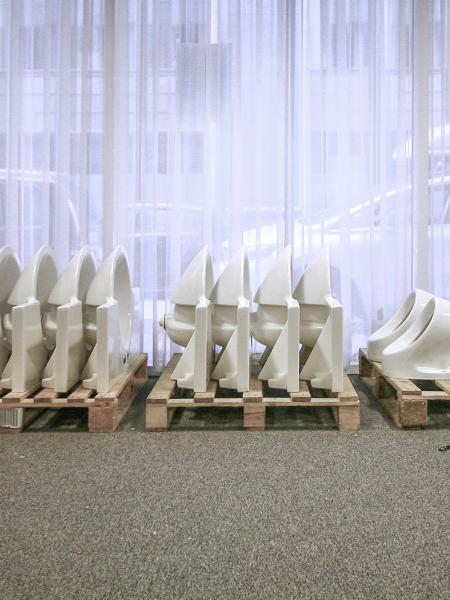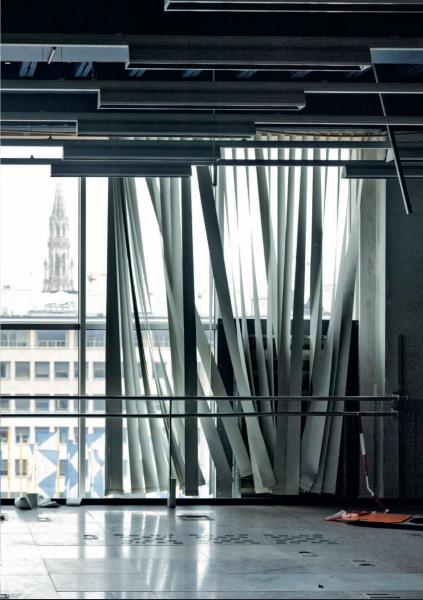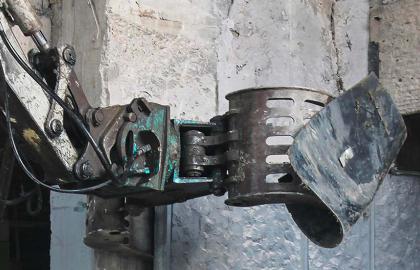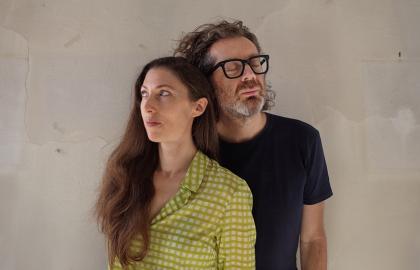Rotor is not your average architecture firm. Not only do they design temporary structures and interiors, but they also assemble exhibitions, compile publications and devise research projects. The common thread throughout everything they do is reuse - a concept they, well, use to question the construction industry. Rotor also plays an active role in the circular economy by meticulously dismantling - or deconstructing, to put it in their words - buildings. The recovered materials are then reintroduced to the market, giving them a second life.
Rotor stood in the spotlight recently with the publication of a monograph on the architect Marcel Raymaekers, a forgotten Belgian pioneer in the field of repurposing, and in 2023 the firm also received the Ultima for Architecture and Applied Arts. It is now celebrating its 20th anniversary with a retrospective at Bozar, although the collective also sees this as an opportunity to look ahead. In order to do so, the architects have invited the French-Italian filmmakers Ila Bêka and Louise Lemoine to document the current entanglement of material flows on nine sites and in an equal number of situations.
"Personally, I’m identifying less and less with the discourse around the ‘transition’ to a ‘circular economy’."
Seizing the opportunity to ‘explore’ through an exhibition is part of Rotor’s DNA, according to Michaël Ghyoot. “Because it’s not every day that we get a chance to think into the future,” says the Rotor member. “With the exhibition Behind the Green Door for the Oslo Architecture Triennial in 2013, we wanted to make an inventory of all the interpretations appended to the word ‘sustainable’. We sensed that there were large, untenable conceptual gaps as well as contradictions in the many concepts. Nowadays, everyone is much more wary of things like greenwashing, but ten years ago we felt it was imperative to ask these questions. Just as we need to interrogate the limits of ‘reuse’ today – the term that’s been used as a lever to question and explore things for the past two decades.”
So, is the new exhibition at Bozar a kind of auto-criticism then? Ghyoot: “Personally, I’m identifying less and less with the discourse around the ‘transition’ to a ‘circular economy’. In most cases, it takes too little account of the actual state of the current economy. It builds dreams on rather precarious foundations. And while we don’t see it as our primary task to provide the solution, we do want to put the issue firmly on the agenda – in all its complexity.”
In an attempt to visualise the interconnectedness of material flows in the current context of depleted resources, geopolitical tensions and climate change, Rotor asked videographers Ila Bêka and Louise Lemoine to visit a number of sites within a 200-kilometre radius of Brussels and to portray them with an open mind. “We also want to make it a sensory experience,” says Ghyoot, “and so we asked them to go and have a closer look at things and find out how everything works on the ground. Our underlying objective is to create a dialogue between the films and the driving forces of our work, specifically the less visible projects.”
The decision to partner with Bêka & Lemoine stems from their focus on how architecture is used: buildings fade behind the human activity. As in Koolhaas Houselife, the duo’s breakthrough film from 2008. Or in 24 heures sur place about the renovation of the Place de République, for which they filmed people’s encounters in the Parisian square. The theme also permeates their recent films about megalopolises in the southern hemisphere, in which they succeed in capturing the complexity of an urban atmosphere without diluting or glorifying it.
“In the exhibition, we consider, amongst other things, the recovery of building elements in the Dutch province of South Holland,” Ghyoot continues. “The local recycling economy there is strongly intertwined with horticulture. But the sector has undergone some major changes in recent years, primarily due to climate change. It hails harder than ever before and conventional glass from greenhouses cannot withstand the force. The panes have to be replaced, which poses challenges for companies specialising in reuse. And all the while, the latter’s market is also shifting. Their main customers were in Eastern Europe, but as these regions are now building new greenhouses with European subsidies, there’s less call for recycling services.”
A well-oiled process
The second major theme of the exhibition is scale. Today’s construction industry is fully geared to large-scale operations, with an all-pervasive standardisation and certification of materials. All architects, engineering firms and contractors habitually work within the given framework. Introducing reuse disrupts this well-oiled process because it implies much smaller and non-standardised quantities of materials. “In our experience, reuse on a small scale isn’t a problem,” says Ghyoot. “But the minute you try and introduce it to larger-scale projects, it becomes the spanner in the works.”
“When scaling up, sometimes it is enough to start from one player and multiply the process times a hundred. But that’s not guaranteed to work in the case of reuse. Which forces us to think differently. And not just us, for that matter. Everyone senses that something has to change, but no one knows exactly how to begin. People get excited whenever a solution emerges that sounds promising or conclusive. But any potential answer, by definition, is incomplete and initially small-scale. And it’s far from certain that generalising or scaling up that solution is, in fact, the magic bullet. I would even dare to say that the tendency to generalise has its own risks, but that would lead us to almost metaphysical reflections.”
